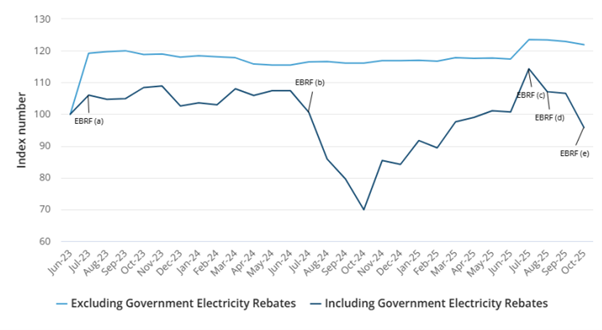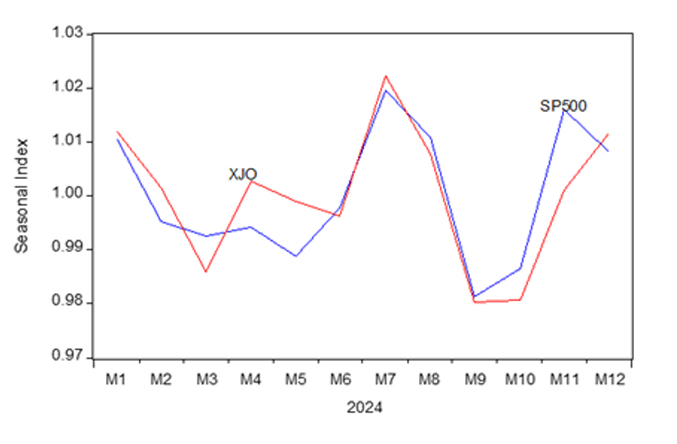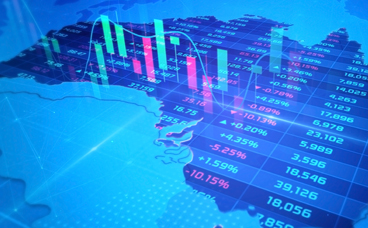Investment Watch: Summer 2026 Outlook
Investment Watch is a quarterly publication delivering insights into equity strategy and economic trends. The Summer 2026 edition explores global and Australian growth outlooks, structural shifts in asset allocation, and highlights opportunities across AI, resources, property, and income strategies to help investors navigate volatility and prosper in the year ahead.
Investment Watch is a quarterly publication produced by Morgans that delves into key insights for equity and economic strategy.
This publication covers
Economics - 'The Australian economy: a landscape of challenge and opportunity'
Asset Allocation - 'Structural shifts demand a portfolio rethink'
Equity Strategy - 'Diversification is key'
Banks - 'Fundamentals don't justify share price strength'
Industrials - 'Prepared for the uptick'
Travel - 'Selective opportunities'
Resources and Energy - 'Steady China and tight supply'
Consumer discretionary - 'Recovery underway'
Healthcare - 'Attractive, but with limited opportunities'
Infrastructure - 'Rising cost of capital but resilient operations'
Property - 'Structural tailwinds building'
It’s hard to believe that 2025 is already drawing to a close. As we enter the holiday season, we want to take a moment to express our deepest gratitude for your continued support and trust. This trust is the very foundation of everything we do. This time of year is a chance to reflect on the significant progress we’ve made. The entire team at Morgans is incredibly proud of the efforts and achievements from the past twelve months that reinforce our commitment to providing you with top-tier advice and opportunities. These achievements mean that Morgans continues to provide top-line advice and investment opportunities that benefit clients across our national branch network.
Morgans clients receive exclusive insights such as access to our latest Investment Watch publication. Contact us today to begin your journey with Morgans.
Key Summaries
- Shares vs property investment Australia comparisons often rely on misleading house price data
- Property returns usually ignore decades of renovation, rebuild, and holding costs
- Share market returns already account for reinvestment and operating expenses
- Net rental income is far lower than most investors expect
- When compared fairly, shares have historically delivered stronger long-term returns
Why property appears as an attractive investment
Charts showing soaring Australian house prices regularly circulate in the media and on social platforms. At first glance, they make property appear unbeatable. The gains look massive, tangible, and reassuring. However, these comparisons have flaws.
Most property vs shares debates compare raw house prices with share market returns, without accounting for the hidden costs of owning property. When those costs are included, the investment story changes dramatically.
Why raw house price data can be misleading
Unlike shares, residential property physically depreciates over time. The Australian Taxation Office estimates that residential buildings have an effective lifespan of approximately 25 to 40 years1, during which significant capital expenditure is typically required to maintain functionality and value.
House price charts, however, reflect only the sale price of a property at a specific point in time. They do not account for renovation expenses, major repairs or rebuilds, ongoing maintenance, or the holding and transaction costs incurred throughout the ownership period2.
By contrast, share market returns are reported after companies have already absorbed the costs of reinvestment, staffing, equipment and business expansion5,6. This structural difference is a key reason why property investment performance is often overstated when compared to shares.
The ongoing costs of property ownership
Property investors face a range of ongoing expenses that share investors simply do not encounter. These holding costs include, but are not limited to, council rates, insurance, maintenance and repairs, body corporate fees, land tax and periods of vacancy when no rental income is received.
According to estimates from the Reserve Bank of Australia (RBA), basic holding costs for residential property average around 2.6% per year2, even before accounting for financing costs. When this is compared to current gross rental yields of approximately 3%3, the result is often a near-zero net yield once expenses are deducted.
In practice, this means that a large portion of rental income, even for properties that appear cash-flow positive on paper, is frequently absorbed by ongoing maintenance and ownership costs rather than generating meaningful surplus income.
In the current property market environment, many investors also rely on negative gearing, where rental income is insufficient to cover loan repayments and expenses. As a result, investors must regularly contribute additional personal funds to service the shortfall, placing further pressure on cash flow. Not to forget, the significant transaction costs of these investments, such as stamp duty, solicitor fees, building and pest reports and buyer’s agent fees.
Adding to this, investment properties are commonly financed using interest-only loans, particularly in the early years. While this may reduce short-term repayments, it means no principal is being repaid during the interest-only period. This increases the investor’s long-term capital requirements and leaves returns heavily dependent on future capital growth rather than income.
How shares work differently to property
Shares function very differently from property investments. Long-term performance figures for major share market indices such as the ASX 300, S&P 500, and Nasdaq already reflect the ongoing reinvestment required to keep businesses operating and growing 5,6. Costs associated with replacing assets, upgrading technology, paying staff, and expanding operations are absorbed at the company level and are accounted for before returns reach investors.
For income-producing shares, dividends are distributed only after all business expenses have been covered. In Australia, franking credits can further enhance after-tax returns8, and investors have the flexibility to reinvest this income or use it to support living expenses in retirement. This structure makes shares significantly more efficient from a cash flow perspective.
When assessed on a like-for-like basis, shares have historically produced higher net returns than property, while requiring less hands-on management and offering greater diversification, which helps reduce overall investment risk7.
Why this matters for Australian Investors
Australians have gained significant wealth through property ownership, particularly in recent years during periods of strong price growth4. However, strong historical performance does not automatically mean property will continue to be the superior investment in all market conditions.
A clear understanding of the true cost structure of property investing allows investors to set more realistic return expectations, create more balanced and diversified portfolios, and make more informed financial planning decisions throughout their working years and into retirement.
Final thoughts
Property is not a passive, set-and-forget investment. Over time, it depreciates, requires ongoing capital expenditure, and demands regular maintenance. Shares, by contrast, incorporate reinvestment within their returns and provide income to investors after business costs have been met5,6.
When assessed on a like-for-like basis, shares have historically delivered stronger long-term performance than property, while requiring less effort, involving lower ongoing costs, and offering greater access to diversification.
If you would like to discuss your investmemt options, please contact a Morgans Financial Adviser. Please note, A Morgans Adviser cannot provide advice on an Investment property.
Frequently Asked Questions
Is property still a good investment in Australia? Yes, but it should not be viewed in isolation. Property can play a role, but the narrative that it outperforms shares is not necessarily the case. The total net costs of both investments need to be included.
Why do house price charts look so impressive? They ignore renovation, rebuild, and maintenance costs, making growth appear higher than reality 1,2.
Are shares riskier than property? Shares fluctuate more short-term, but property carries concentration, liquidity, and capital risk that is often underestimated7.
What is the biggest hidden cost in property investing? Capital reinvestment over time, including major renovations and rebuilds, which are rarely factored into returns 1,2.
Which performs better long term: shares vs property investment Australia? Historically, diversified shares have delivered higher net returns with lower ongoing costs 5,6,7.
References
1. Australian Taxation Office (ATO) – Capital works deductions and effective life of buildings https://www.ato.gov.au/Individuals/Investing/Investing-in-property/
2. Reserve Bank of Australia (RBA) – Housing and Housing Finance Statistics ttps://www.rba.gov.au/statistics/housing.html
3. CoreLogic – Australian Housing Market & Rental Yield Data https://www.corelogic.com.au
4. Australian Bureau of Statistics (ABS) – Residential Property Price Indexes https://www.abs.gov.au/statistics/economy/price-indexes-and-inflation/residential-property-price-indexes-eight-capital-cities
5. ASX – Long-term Investment Returns and Dividends https://www.asx.com.au/investors/investment-tools-and-resources/education/shares
6. Vanguard – Index Chart® and Long-Term Market Returns https://www.vanguard.com.au/personal/learn
7. Australian Securities & Investments Commission (ASIC) – Shares, Property and Diversification https://asic.gov.au/investors/
8. ATO – Dividend Income and Franking Credits https://www.ato.gov.au/Individuals/Investing/Investing-in-shares/
Australia’s households could face higher electricity costs and rising inflation in 2025. With electricity subsidies ending and energy supply constraints persisting, the Reserve Bank of Australia (RBA) may be forced to lift interest rates. Here’s what you need to know.
Key Summaries
- Retail electricity subsidies worth $9 billion per year are being phased out.
- Retail electricity prices are expected to rise sharply in 2025.
- Inflation could accelerate to 4% or more in the second half of the year.
- RBA may then need to make three 25-basis-point rate hikes.
- The cost of renewable energy is not just the cost of wind and solar,
natural gas is also needed to stabilise renewable energy.
Why Are Electricity Prices Rising?
The government’s decision to remove $9 billion in electricity subsidies will expose households to the true cost of power. Over the past two years, wholesale electricity generation costs have surged by 23%, driven by supply constraints and reduced capacity in New South Wales.
How Will This Impact Inflation?
Electricity prices feed directly into the Consumer Price Index (CPI) with a lag of around two quarters. As subsidies end, retail prices will rise, pushing inflation higher, especially in the second half of 2025. Businesses will face increased costs and pass these on to consumers.
Interest Rates: RBA’s Likely Response
Higher inflation means the RBA will need to act. While some banks forecast small rate hikes early in the year, Morgans expects three 25-basis-point increases in the second half of 2025. This could significantly impact mortgage holders and borrowing costs.
The Role of Renewable Energy and Gas Pricing
Despite claims that renewables are the cheapest energy source, electricity prices remain high because consumers need power 100% of the time. The marginal cost of electricity is set by natural gas, which stabilises supply when renewables cannot meet demand. Global gas prices, influenced by events such as the war in Ukraine, ultimately determine the cost of electricity in Australia.
FAQs
Why are electricity prices increasing in Australia?
Because subsidies are ending and generation costs have risen by 23% over the last two years.
How will this affect inflation?
Consumer prices could rise by 4% in the second half of 2025 as higher energy costs flow through the economy.
Will interest rates go up?
Yes, the RBA may raise rates three times in the second half of 2025 to curb inflation.
Are renewables making electricity cheaper?
Not necessarily. Prices are influenced by natural gas, which sets the marginal cost of supply.
What does this mean for households?
Expect higher power bills and increased mortgage costs if rates rise.
Australia faces a challenging year ahead with rising electricity costs, accelerating inflation, and likely interest rate hikes. Planning ahead is essential for households and investors.
Want to discuss how this impacts your portfolio?
DISCLAIMER: Information is of a general nature only. Before making any financial decisions, you should consult with an experienced professional to obtain advice specific to your circumstances.
Federal Reserve Interest Rate Outlook: What Investors Need to Know
The Federal Reserve’s latest projections reveal a surprisingly moderate outlook for inflation and interest rates. Despite tariff concerns earlier this year, the Fed expects inflation to remain subdued and rates to decline gradually. Here’s what this means for markets and investors.
Key Takeaways
- Fed forecasts interest rates around 3.4%, aligning with market expectations.
- Inflation impact from tariffs is far lower than predicted.
- Core inflation expected to fall to 2.5% next year and reach target levels by 2028.
- Growth outlook remains positive with no recession in sight.
- A benign economic environment could support U.S. equities.
What the Fed’s Latest Projections Tell Us
Every quarter, the Federal Reserve releases its Summary of Economic Projections (SEP), which includes forecasts from the Federal Open Market Committee and regional Fed banks. These projections carry significant weight because they reflect the collective view of some of the most influential economists in the U.S.
Table 1. Economic projections of Federal Reserve Board members and Federal Reserve Bank presidents, under their individual assumptions of projected appropriate monetary policy, December 2025

Interest Rate Outlook: Gradual Declines Ahead
Our model estimated the equilibrium Fed funds rate at 3.35%, and the Fed’s own forecast is close at 3.4%. This suggests rate cuts are likely in the near term, with further declines to 3.1% in subsequent years. For investors, this signals a stable environment for borrowing and equity markets.
Inflation: Lower Than Expected Despite Tariffs
Earlier predictions suggested tariffs could push inflation up by 1.6%, but the actual impact has been minimal. Headline inflation is projected at 2.9%, and core inflation at 3%, well below initial fears. The Fed expects core inflation to fall to 2.5% next year, then to 2% over the longer term.
Growth Outlook: No Recession on the Horizon
Despite global uncertainties, the Fed anticipates steady growth: 1.7% this year, 2.3% next year, and 2% thereafter. This benign outlook, combined with easing inflation, suggests a supportive environment for U.S. equities.
FAQs
Q1: Why is the Fed cutting rates?
To maintain economic stability and support growth amid moderating inflation.
Q2: How will lower rates affect investors?
Lower rates typically reduce borrowing costs and can boost equity markets.
Q3: Are tariffs still a risk for inflation?
Current data shows tariffs had a smaller impact than expected, thanks to strong service-sector productivity.
Q4: Is a U.S. recession likely?
The Fed’s projections show no signs of recession in the near term.
Q5: What is the Fed’s inflation target?
The Fed aims for 2% core inflation, which it expects to achieve within a few years.
The Federal Reserve’s outlook points to a stable economic environment with easing inflation and gradual rate cuts. For investors, this could mean continued opportunities in equities and fixed income. Want to learn more about how these trends affect your portfolio?
Investment Watch is a quarterly publication produced by Morgans that delves into key insights for equity and economic strategy.
This publication covers
Economics - 'The Australian economy: a landscape of challenge and opportunity'
Asset Allocation - 'Structural shifts demand a portfolio rethink'
Equity Strategy - 'Diversification is key'
Banks - 'Fundamentals don't justify share price strength'
Industrials - 'Prepared for the uptick'
Travel - 'Selective opportunities'
Resources and Energy - 'Steady China and tight supply'
Consumer discretionary - 'Recovery underway'
Healthcare - 'Attractive, but with limited opportunities'
Infrastructure - 'Rising cost of capital but resilient operations'
Property - 'Structural tailwinds building'
It’s hard to believe that 2025 is already drawing to a close. As we enter the holiday season, we want to take a moment to express our deepest gratitude for your continued support and trust. This trust is the very foundation of everything we do. This time of year is a chance to reflect on the significant progress we’ve made. The entire team at Morgans is incredibly proud of the efforts and achievements from the past twelve months that reinforce our commitment to providing you with top-tier advice and opportunities. These achievements mean that Morgans continues to provide top-line advice and investment opportunities that benefit clients across our national branch network.
Morgans clients receive exclusive insights such as access to our latest Investment Watch publication. Contact us today to begin your journey with Morgans.
The Australian economy, challenge and opportunity
Today we want to talk about the unusual group of challenges which the Australian economy now faces. We will then move on to look at some remarkable opportunities.
Last year 2024, the US economy grew by 2.2%. We think it will grow in 2025 by 1.8%. This modest slowing of growth is occurring as the Fed Reserve achieves a soft landing in the US economy.
We expect that the Fed Reserve having achieved that soft landing, will undertake a series of rate cuts, with the first beginning in the meeting of 10 December this year. We expect a single rate cut of 25 basis points of that meeting with a further 25 basis points at the next meeting in the new year. This will bring down the Fed Funds rate to our estimate of neutral.
The Fed might reasonably be expected to cut rates further to provide a genuine stimulus for recovery in the US economy later in the year. We expect that after growth of 1.8% in 2025, growth should accelerate to 2.2% in 2026.
Australia is in an international environment where growth in 2026 is expected go be better than growth in 2025. The Australian economy is recovering within this positive international outlook. After 1.3% growth in 2024, we expect the Australian economy to grow by 2.1% in 2025. This should then be followed by an improvement in growth to 2.3% in 2026.
The problem Australia has, in the short term, is a rebound in inflation. After 2.4% inflation in 2024, it is likely that CPI headline inflation will reach 3.8% in 2025. Indeed it already reached this number for the year to October 2025. Depending on government action, we think inflation might ease to a headline level in 2026 of 3.0%.
Chart 1: Electricity Rebate Price Chart – October monthly CPI

In this chart above, the blue line represents the actual cost of generating electricity in Australia over the period from June 2023 to October 2025. The black line below it is the actual retail cost to Australians after Fed govt subsidies have been provided to reduce the retail price. Since June 2023, the Fed govt has provided five Energy Bill Relief Fund (EBRF) rebates. These are provided by the Commonwealth to individual States to subsidise and reduce the retail price in their own State.
The black line represents the series which is used for electricity in the Australian consumer price index (CPI). Our observation is that rises and falls in this measure also affect the broader CPI after a lag of two quarters. This is important because we can see that between June 2024 and October 2024, this measure of electricity prices fell from 107.4 in June to 69.9 in October 2024.
Our belief it was this decline in subsidised electricity prices which allowed the decline in the CPI in Australia in the first half of 2025. This in turn generated an environment for the RBA to cut rates.
After reaching its low of 69.5 in 2024, the retail index rose gradually as the subsidies from the Fed govt declined. This led this component of the CPI to rise to 114.3 in June 2025. This was a rise of 44.8%. It is this rise which months later is feeding its way into the Australian CPI and causing a sharp move up in the CPI as we move towards the end of calendar 2025.
By the time of the October CPI, this had led that index to rise at a rate of 3.8% from the level the year before. What happens in the future to this component of the CPI is entirely dependent upon govt policy. A previous statement by the Treasurer is that no more subsidies will be provided by the end of this year. We will have to wait and see what emerges in the budget for 2026.
Our major concern is not with the series including government rebates. Our major concern is with the cost of generating electricity, excluding the electricity rebates. We now turn our attention to light blue line. This shows that the cost of generating electricity rose from an index level of 100 in June 2023 to 121.9 in October 2025. This is a rise of 21.9% in two years.
In this period the Australian economy is undertaking an energy transition to renewable generating system. This means that an increasing amount of electricity is being generated by solar panels and wind mills. Our understanding is that at the time of writing, this renewable component of electricity has now risen to 36% of total electricity output. We are told that these forms of renewable energy are the cheapest form of generation. Why therefore has the price made such a significant rise?
It is true that solar panels and windmills will generate very cheap energy for periods of time during the day. The problem however is opposed to the variable generation of energy for parts of the day, consumers demand that electricity be available 100% of the day. This ability is provided by forms of energy which stabilise or “firm” generation so that power will be available 100% of the day. At this time, the only form of energy which can currently provide this stability at scale comes from gas peaking plants. This means that natural gas is the form of energy which provides the last marginal unit of production which makes electricity available. Economists know that for a market to clear and a product to be available 100% of the day, then the price of the good must be equal to the last margin unit of production. In this case that last margin of production is provided by natural gas. So the pricing of renewal energy is governed by the pricing of natural gas.
This means that renewable energy will be very cheap if that natural gas is available at a cheap price. This for example was the case in Germany before the war in the Ukraine. Up until that time, the last unit of renewable energy was being provided by very cheap natural gas.
What then happened was that that very cheap Russian natural gas was replaced by more expensive Norwegian gas and even more expensive gas provided by American LNG.
In the long term, it is the price of natural gas which is determining the increasing cost of Australian renewable energy. In the short term, anecdotal evidence suggests the rise in electricity price in eastern Australia followed the closure of the Liddell Power Station near Muswellbrook in 2023. The station had four 500Mw generating units with the last taken off line in April 2023. At the time of closure, Liddle was supplying 10% of NSW electricity demand. This closely tallies with the escalation of electricity generation cost in mid 2023. This suggests that the problem is not whether renewable energy is or is not preferable to coal power electricity. The issue is that there in not enough electricity currently being generated. It is this shortage of electricity which has generated an increase in price. We note that the electricity price in the chart above Excluding Government Electricity Rebates, increases in price immediately after the time when Liddell power station is withdrawn from service.
The result of this inflation influence from electricity prices is that the Australian cash rate will rise during calendar 2025. Our model of the cash rate currently suggests two rate hikes each of 25 basis points in the first half of 2026. This will take the Australian cash rate to 4.1%.
At the same time that the Australian cash rate is rising, the US Fed Funds rate should be falling. Our model of the Fed Funds rate currently suggests an equilibrium level of 3.32%. This suggests two rate cuts, the first in December 2025 and the second in the first quarter of 2026.
The fact that the Fed Funds rate should fall at the same time as the Australian cash rate should rise, immediately suggests a rise in the Australian dollar. We expect the $A/$US exchange rate to rise to US71cents by the middle of 2026.
The falling Fed Funds rate should of course put downward pressure on the US dollar. This will in turn allow a revival of commodity prices. We expect a broad based recovery in commodity prices, beginning with soft commodity prices. The fall in the $US should generate a significant recovery in the price of wheat, corn and cotton. Following the recovery in soft commodities, we should see the beginning of recovery in oil and gas. This recovery in oil and gas is in spite of the very pessimistic outlook that is currently gripping the energy market. This broad recovery in commodities should generate a healthy recovery in Australian cyclical stocks.
Chart 2: Seasonality ASX200 versus S&P500

Our model for the S&P500 and the ASX200 both show that both these markets are overbought. This means that they are both significantly higher than the fair value presented by our model. This level of over-valuation is not unusual at this time of the year. Our chart above shows average seasonal variation in both the S&P500 and the ASX200. Both rally to near term peaks in November and December. These seasonal peaks are then followed by a correction continuing up until March/April.
We think this kind of seasonal correction is likely to follow in coming months. The correction should be mostly completed by the end of March 2026. The correction on a seasonal basis because at the end of the European financial year in March, investment institutions tend to withdraw from the market ahead of their end of financial year balanced dates.
In summary, our view is that both the Australian economy and the US economy, still share an outlook for healthy growth. A fall in the $US as we go into the early months of calendar 2026, should have the result of a broad recovery in commodity prices. This should generate an earnings recovery for Australian stocks.
In the very short term, we think both the US and Australian markets are overbought. Still, if we are patient, by the time we get to the end of the first quarter, a strong outlook of market recovery should then arise
FAQs
What is the Australian GDP forecast for 2026?
We expect GDP growth of around 2.1% in 2025, improving to about 2.3% in 2026 as global conditions and domestic demand firm.
Why is inflation rising in Australia in 2025?
Retail electricity prices rebounded as subsidies eased and generation costs climbed, feeding into CPI with a lag. Tight supply conditions have amplified the effect.
How will interest rates change into 2026?
Our base case is two RBA hikes (2 × 25 bps) in the first half of 2026, while the Fed trims its policy rate. The divergence favours a stronger AUD.
What role does renewable energy play in electricity prices?
Renewables lower average costs when firming is efficient and gas is cheap. When firming costs rise or gas supply tightens, wholesale prices increase.
Is the Australian economy outlook 2026 positive for markets?
After a seasonal correction into March/April 2026, a softer USD and recovering commodities should support Australian cyclicals and broader market performance.
Superannuation Changes in 2026: What Div296 and PayDay Super Mean for Your Wealth
Key Takeaways
- Div296 overhaul introduces tiered tax rates for super balances above $3M and $10M, starting 1 July 2026.
- PayDay Superannuation law requires employers to pay Super Guarantee within 7 business days of wages.
- Economic outlook for 2026 shows steady growth and opportunities for investors.
- SMSF members must take extra care to meet annual minimum payment requirements to avoid losing the pension exemption.
- Age pensioners have a bit more flexibility without earned income affecting their pension benefits.
Introduction
More superannuation reforms are coming in 2026, which will impact high-balance super holders and employers. The government has revised Div296 policy and the new PayDay Superannuation legislation aims to improve fairness and compliance in Australia’s retirement system. Combined with a shifting economic outlook, these changes make it critical to review your strategy now.
This guide explains what’s changing, why it matters, and how you can prepare.
Div296 Explained: New Rules for High-Balance Super Accounts
From 1 July 2026, the government will implement a tiered tax system for large super balances if legislation is implemented:
What this means for you
- If your Total Super Balance (TSB) exceeds $3M, a portion of your earnings will attract higher tax.
- SMSF members and defined benefit interests are included.
- The ATO will calculate liabilities, but funds must report realised earnings.
Action steps
- Clients should hold off taking any action until we know more. There are still many details yet to be clarified with the amended Div296 policy so we ask clients to continue to be patient.. Continue to speak to your adviser, who will keep you updated when further details are released by the government.
PayDay Superannuation: On-Time Employer Contributions Become Law
The Treasury Laws Amendment (PayDay Superannuation) Bill 2025 introduces a major compliance shift:
- Start date: 1 July 2026.
- New rule: Employers must pay Super Guarantee within 7 business days of paying wages (Qualifying Earnings).
- Penalties: Increased fines for late payments.
- Impact: Small businesses may face challenges adapting to real-time reporting. The change in timing of SGC payments in the first year may result in employees exceeding their concessional contribution cap if they are also salary sacrificing into super.
Why it matters
This change aims to reduce unpaid super and improve retirement outcomes. Employers should ensure they understand this new law by utilising available education tools and resources that are available. Payroll systems will need to be updated and staff educated prior to 1 July commencement date.
Economic Outlook for 2026: What Investors Should Know
Australia’s economy is forecast to improve to 2.3% in 2026, with inflation easing to 3.0%. Key trends include:
- AUD strength: Expected to rise to US70 cents in 2026.
- Commodity recovery: Wheat, corn, and soybeans undervalued, leading to opportunities for agribusiness investors.
- Global stability: Growth is healthy but not spectacular.
Investor takeaway
Diversification across all asset classes and sectors remains critical.
Practical Steps to Prepare
For Individuals
- Review super contributions strategies to ensure caps won’t be breached, and ensure annual minimum pension payments are made.
- Understand Work Bonus rules if you’re a pensioner and partake casual work.
For SMSF Trustees
- Ensure compliance with updated ATO rulings on income streams and minimum payment standards.
For Employers
- Seek advice on what upgrades need to occur to your payroll systems in preparation for PayDay Super compliance.
Conclusion
Once again, 2026 brings more superannuation changes. Whether you’re an investor, employer, or retiree, proactive planning is essential to protect and grow your wealth.
Ready to prepare?
Speak to a Morgans adviser today for tailored strategies on superannuation, SMSF compliance, and investment planning.
Morgans clients receive exclusive insights such as access to our latest Your Wealth publication.
Contact us today to begin your journey with Morgans.
FAQs
1. What is Div296 and who does it affect?
Div296 applies to individuals with super balances above $3M. It introduces higher tax rates on realised earnings for large balances.
2. When does PayDay Super start?
The law takes effect on 1 July 2026, requiring employers to pay super within 7 business days of wage payment.
3. Will unrealised gains still be taxed?
No. The new system taxes realised gains only, aligning with existing income tax concepts.
4. How can I prepare for these changes?
Some changes such as Div296 are not yet legislated so no action should be taken yet until details are clearer. For PayDay Super changes, employers should review their payroll systems and seek professional advice.
5. Where can I find official guidance?
Visit the ATO website and Treasury fact sheets for detailed updates.












